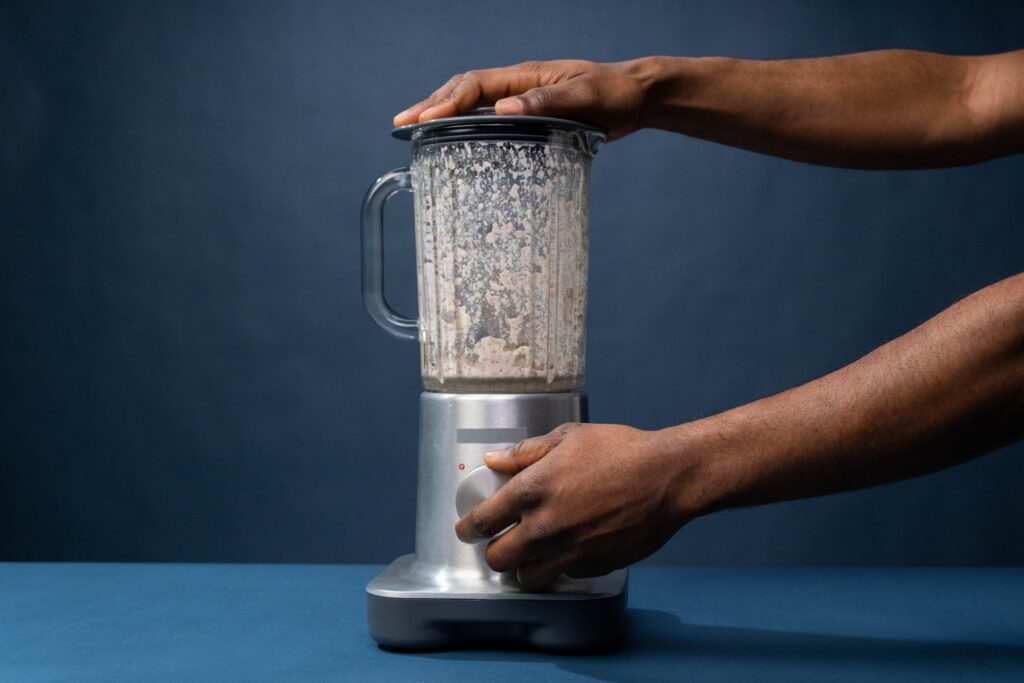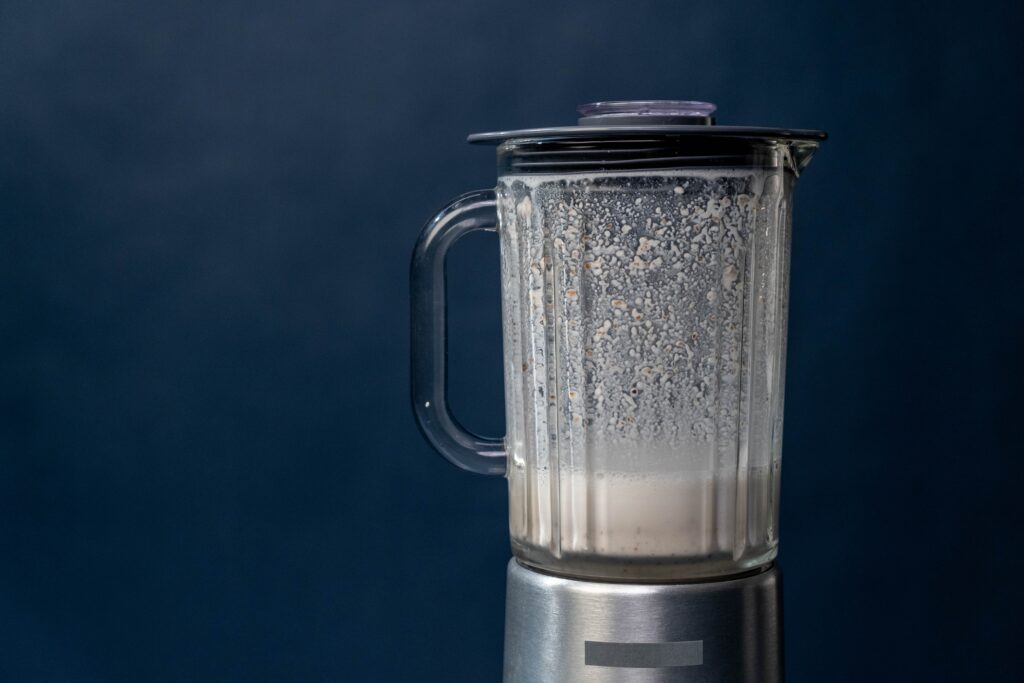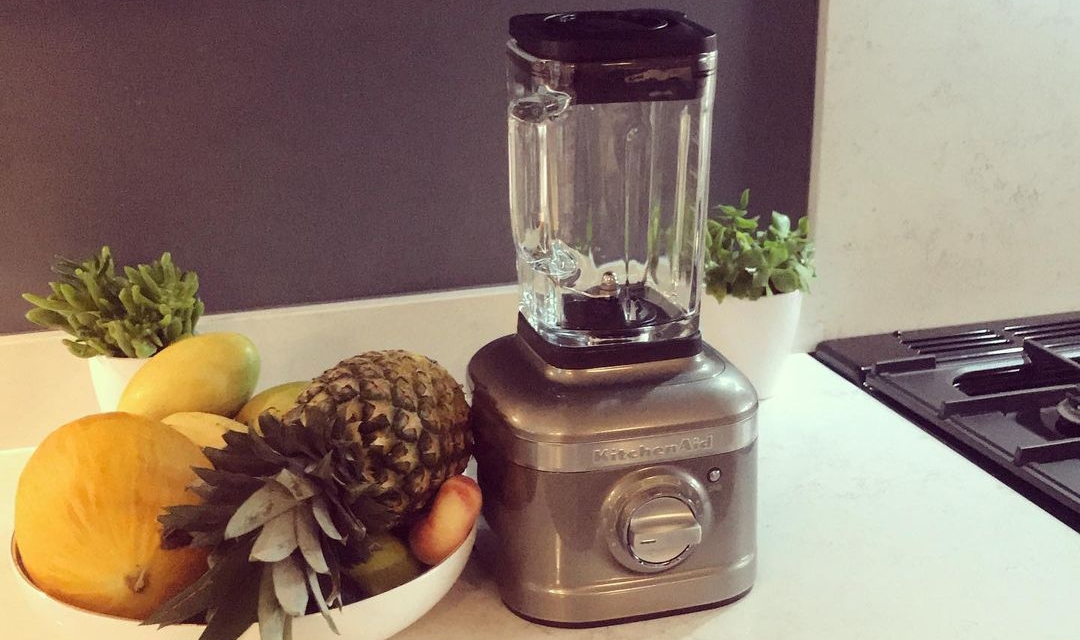There are a number of tasks that can be performed by a blender, including grinding, chopping, mixing, and puréeing — all of which can reduce the amount of time you spend doing kitchen chores. In spite of being so helpful, however, it is possible for your blender to develop an odor over time which may be irritating and difficult to remove.
This is because you have blended a number of meals and drinks in the same jar which may have left hidden particles that were not properly cleaned away. Blending foods like onion, garlic, raw eggs, etc, which have strong odors can cause the blender to retain their smells. Over time, the combination of these various foods can cause the blender to develop a funky smell.
While your blender can develop an unpleasant odor in the blending jar, there can be other scents emanating from your blender similar to the scent of mold, burning rubber, or a burning electrical wire. None of which are good.
In fact, if certain parts in your blender are not operating properly, not only will you get a foul or unusual odor but this can affect the motor. When the motor is affected, this then leads to that burning electrical scent.

If you realize that odor is coming from the blending jar, then this is usually due to food particles that are still stuck in the blender. Food particles can get stuck in between the blades and if not taken apart and thoroughly washed after each use, can result in a build-up of bacteria leading to that unwelcome smell. This can happen when pieces of food that refuse to circulate properly around the blade falls into gaps between the blades.
If left behind this can decay and when joined by other food particles the next time around turn into that unpleasant scent. If not properly cleaned over time, food particles can even cause a hard crust on your blades and make it even more difficult to be removed when you finally decide to clean.
That Moldy Smell!
Another reason your blender may smell is the formation of mold. Yes, your blender may smell because there is mold forming inside! If there is mold or mildew in the home this can sometimes be transferred to your appliance if it has not been used and washed for some time.
Mold will give your blender that musty wet cardboard or mothballs scent that can then make whatever you blend taste the very same. Exposure to microbial volatile organic compounds (VOCs) can result in various health issues and should not be taken lightly.
If this occurs, ensure that you scrub your blender including carefully removing the blades and ensuring they too are properly scrubbed. You can even add a few drops of bleach to the soapy water but ensure that this is properly rinsed afterward.
To be certain that all the bleach water is out of your blender, you can add pure water to your blender after fitting it back together and turning it on, and allowing it to run for about 30 seconds as it washes itself.

That Burning Smell!
Many blending jars are made of BPA (Bisphenol A) plastic, which is prone to retaining odors and scents, especially if not cleaned properly and regularly. To avoid scent from developing in your jar you can fill it halfway with vinegar and baking soda and let it sit overnight ever so often.
This will be especially helpful if you use your blender on a regular basis. This will take care of any liquids and other food particles that may have squeezed past the seals into the electric motor that a simple wash may not have got rid of.
If you overfill your blender causing the mixture to flow over onto the base while blending, this can result in a burning smell. To prevent this there are a few things you can do.
- Do not overfill your blender but keep the mixture at the recommended level as indicated on the jar.
- Secondly, before you start your blender make sure the blender’s base is tightened to the top so that no liquid seeps out as you blend.
- Wash your blender promptly after use, and do not let it sit for an extended period of time. If you wash it after each use, they will last longer and be free of unwanted odors.
Food lodged between the blades can result in them not working properly. Due to increased friction caused by the blades not rotating freely in a blender, the motor overheats, resulting in an unpleasant odor and, occasionally, smoke. When your motor starts to overheat it creates an odor like burning plastic similar to that of having your electric wire shorting out.

Other Causes of A Smellie Blender
Multiple Purpose Use
Using the blender for blending different kinds of fruits, vegetables, nuts, meats, etc can cause blender smells to linger. This is especially true if you do not clean the blender after each use.
Strong Scented Foods
Just as a sponge absorbs water, a blender can absorb highly flavored foods and their odors. A smellie blender can even cause your surrounding to stink. Sometimes it can even be hard for you to detect the unsuspecting blender as the cause of the problem, which can be very frustrating each time you walk into your kitchen.
Overheating Motors
When a blender’s blades break, the metal rod that runs through them can easily become exposed. The metal rod often doubles as a blade guard as well. In spite of this, food particles and stains from juices get stuck in the blender’s base, causing it to jam. When a blender’s motor overheats due to a lack of lubrication caused by food particles jammed in the base, it will produce an awful sound while operating and gives off a dull burning smell. This can render your blender useless.
Using Your Blender as a Storage
Don’t keep blender spare parts in your blender when it’s not in use. This includes not storing the smaller parts of your blender, like blades, lids, and pouring sprouts — inside the pitcher. Even though this may seem like the best and easiest storage place so you do not stand the chance of misplacing them, this is not a good idea. Storing smaller blender parts in your blender jar can increase the chances of molds and bacteria building up inside there as the moisture (from these freshly washed parts) can seep between the unreachable areas and lodge there resulting in a moldy smell. Sometimes even when you believe the areas beneath the blades are dried this may not be so when you store your blender away in your cupboard. This too can result in the build-up of mold or bacteria from the cool temperature inside the cupboard.
Not Only Does It Smell, But It is Also Discolored!
While hidden particles can cause your blender to be smellie, if your blender is not properly cleaned after blending colored foods, this can result in your jar becoming discolored if the remains are allowed to sit in your blender over time. Therefore, ensure that you pay attention to this in order to avoid it becoming discolored. Plastic jars can easily be stained by the color of foods if not attended to immediately. Washing immediately will get rid of any color that may have stayed on the jar before it begins to stain. However, if staining has begun, squeeze a lemon and add 2 tbsp of baking soda to about a cup of water in your blender and let it sit for a few minutes. You can also turn the blender on and let it run for about 30 seconds at high speed. Afterward, scrub the inside with a gentle sponge, then rinse and dry. Your blender should be looking as clean as crystal once again!

Dealing With That Smell
Clean After Each Use
It is very important to clean your blender after each use as the longer food particles are allowed to stay in your blender, the more likely they are to dry up and become stuck between its blades. Thus resulting in the decaying food starting to smell. It is important to take the blender apart and clean between the blades as best as possible.
After washing ensure that you allow the blender to sit and air dry properly before storing it away. Allow it to sit in the open where the air will pass through it freely. Try setting it in a cool place away from sunlight where air circulates freely. This will reduce the possibility of water droplets remaining and cause microbes like molds and bacteria to form inside.
If you clean with dishwasher soap and water and your blender still has a lingering smell, you can add some lemon juice. Fill the jar halfway with hot water and add a sliced lemon to the blender. The lemon aids in the removal of odors from the blender jar and will give it a welcoming fresh scent. Allow to air dry.
Instead of lemon juice, you can also use 3/4 cup white vinegar or 1/4 cup baking soda. You can even use both if the scent is really bad. A smelly blender does not mean getting rid of the appliance and investing in a new one. It just means that you need to take a few extra steps to get rid of the scent.
After cleaning the jar and blades, make certain to wipe the base of your blender with a soft wet cloth and dish soap. Never immerse your blender base in water. This will completely damage your motor.

